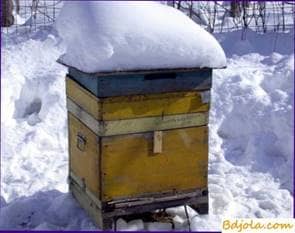
Bees usually “work” only in the spring and summer, and fall and winter “rest”, feeding on winter fodder stocks left by the beekeeper.
We decided to check whether bees will take artificial nectar in winter, in hothouse conditions. Experiments were carried out which showed that in the greenhouse at an air temperature of +21 њ C, bees not only flew freely, but also daily energetically chose from the feeders artificial nectar (sweet infusion of pine needles), processed it and put the cooked honey in honeycomb cells.
Thus, it was proved that the express method of obtaining honey honey is applicable at all seasons.
Развести щавелевую кислоту. Метод чайкина.
Bee Honey